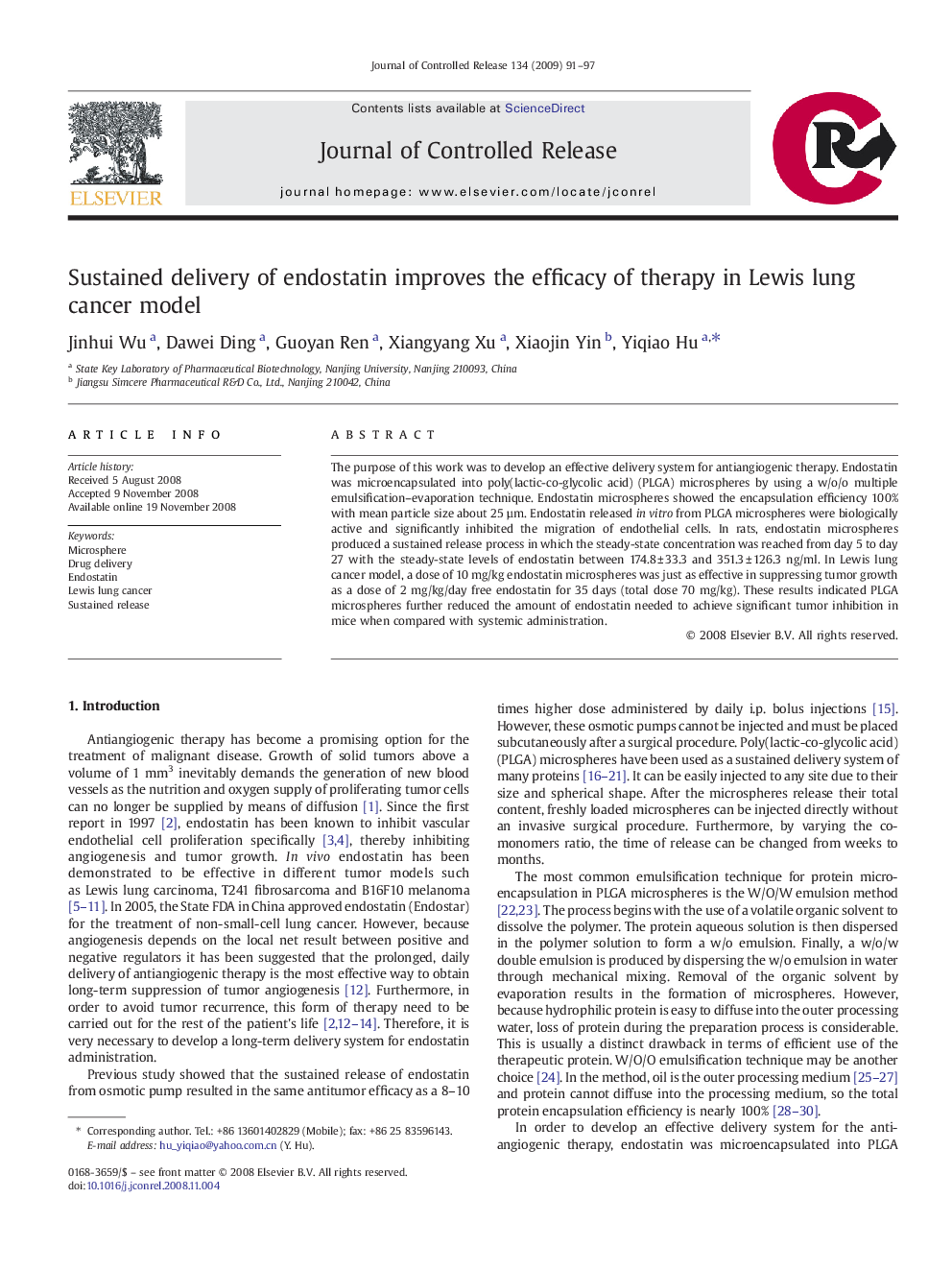| Article ID | Journal | Published Year | Pages | File Type |
|---|---|---|---|---|
| 1426588 | Journal of Controlled Release | 2009 | 7 Pages |
The purpose of this work was to develop an effective delivery system for antiangiogenic therapy. Endostatin was microencapsulated into poly(lactic-co-glycolic acid) (PLGA) microspheres by using a w/o/o multiple emulsification–evaporation technique. Endostatin microspheres showed the encapsulation efficiency 100% with mean particle size about 25 µm. Endostatin released in vitro from PLGA microspheres were biologically active and significantly inhibited the migration of endothelial cells. In rats, endostatin microspheres produced a sustained release process in which the steady-state concentration was reached from day 5 to day 27 with the steady-state levels of endostatin between 174.8 ± 33.3 and 351.3 ± 126.3 ng/ml. In Lewis lung cancer model, a dose of 10 mg/kg endostatin microspheres was just as effective in suppressing tumor growth as a dose of 2 mg/kg/day free endostatin for 35 days (total dose 70 mg/kg). These results indicated PLGA microspheres further reduced the amount of endostatin needed to achieve significant tumor inhibition in mice when compared with systemic administration.
Graphical abstractSustained delivery of endostatin by poly(lactic-co-glycolic acid) microspheres improves the efficacy of therapy in Lewis lung cancer model. MS: endostatin poly(lactic-co-glycolic acid) microspheres.Figure optionsDownload full-size imageDownload as PowerPoint slide
